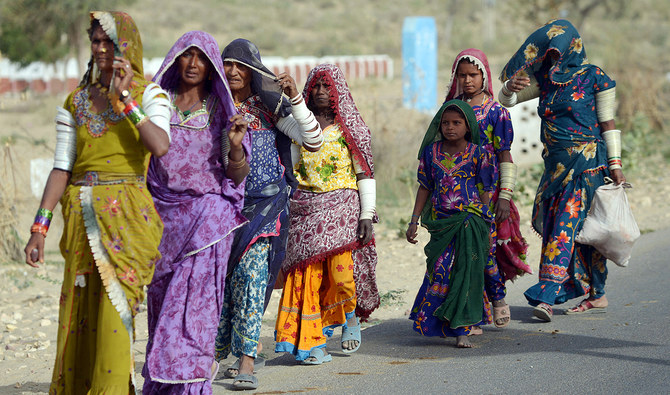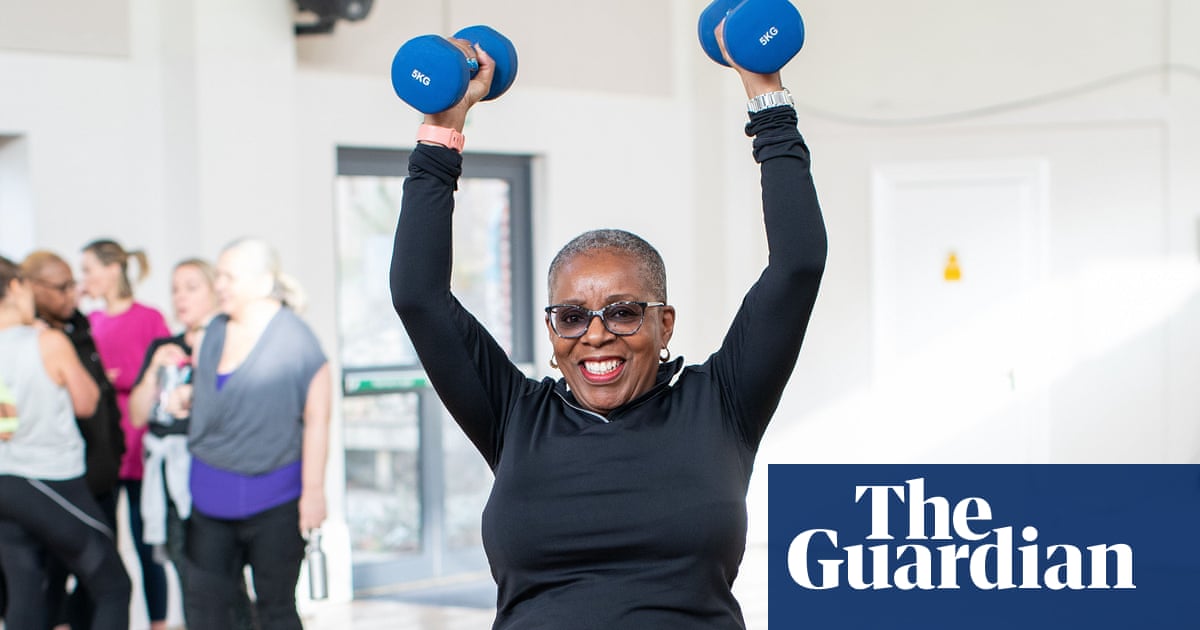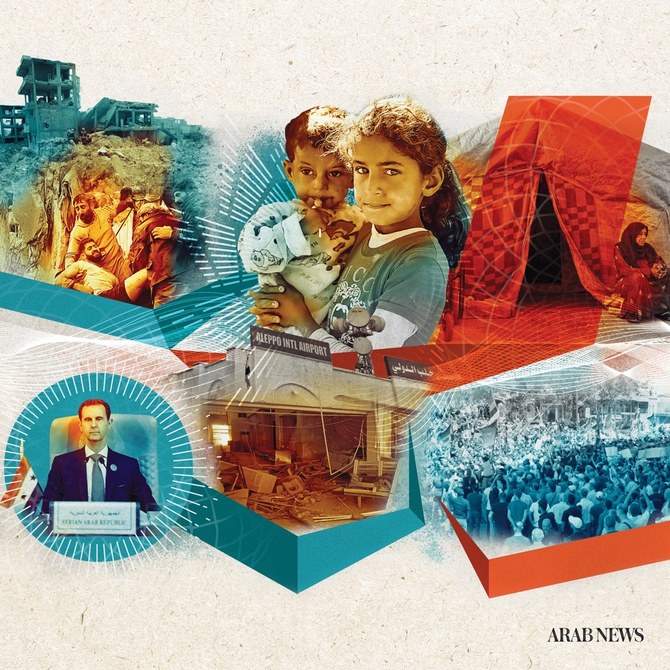
Registered women voter turnout in 2018 went as high as 72.8% in Tharparkar, lowest was 7.8% in Shangla
Krishna Kumari Kohli, a female senator from the desert region, hopes to witness increased women voter turnout on Feb. 8
THARPARKAR/KARACHI: It took a national tragedy for Hanju Kolhi, a 70-year-old Hindu woman from a small settlement near Islamkot in Tharparkar district, to start voting.
Kolhi took part in her first national election in 2008 after never casting a ballot before. The shift in her attitude was prompted by the assassination of former prime minister Benazir Bhutto in a gun-and-bomb attack on the campaign trail in December 2007.
In subsequent years, Tharparkar’s desert region in the southern Sindh province witnessed a remarkable surge in women’s electoral participation, defying national trends. According to data analysis by the Free and Fair Election Network, turnout rates for women voters in the area soared in 2018 to an unprecedented 72.8 percent in the NA-221 constituency and 71.4 percent in NA-222.
Contrast this with the starkly different situation in Khyber Pakhtunkhwa’s NA-10 Shangla and NA-48 North Waziristan. In these areas, women’s presence at polling stations was rare, and conservative cultural norms combined with logistical hurdles kept turnout abysmally low, with figures languishing at 7.8 percent and 8.2 percent, respectively.
Tharparkar also led with the highest women voter turnout in the 2018 general election for provincial assembly seats. Four out of the top five constituencies nationwide having the highest number of women voters were situated in Tharparkar — the first, second, third and fifth constituencies.
“In the elections following Benazir Bhutto’s assassination, I began to cast my vote,” Kolhi told Arab News. “It was a response to my conscience, as Benazir sacrificed her life for us. In return, I felt it was my duty to vote for her. Voting for her is a matter of life and death for me.”
Speaking to Arab News, Ali Akbar Rahimoo, executive director of a Tharparkar-based social welfare organization, Aware, acknowledged that the people of the region had exhibited political awareness by voting in recent electoral contests in large numbers.
However, he added that women were impeded from taking part in the democratic process in the past by other factors as well, such as the absence of Computerized National Identity Cards, which they later secured for financial reasons.
“For availing the Benazir Income Support Program, a large number of women obtained national identity cards, thereby gaining access to the voting rolls,” he said.
Rahimoo informed the National Database Registration Authority, which issues CNICs to citizens, to also become more accessible to the residents of the area, ensuring greater mobility among the populace in the arid region surrounded by a sprawling desert.
“While these cards have undoubtedly played a significant role, other factors have also influenced female voter turnout,” he said. “There was no drought in Tharparkar, and as such, no seasonal migration during the 2018 election, meaning that people remained in their constituencies and were able to vote.”
In the 2024 elections, Mehar-un-Nisa, an independent candidate backed by former Prime Minister Imran Khan’s Pakistan Tehreek-e-Insaf party, is vying for NA-215 (previously NA-221) from Tharparkar. She stands as the sole female candidate in the district who is running for a general seat either for the national or provincial assembly seat.
“Tharparkar suffers from poverty where people lack basic facilities,” she told Arab News. “Among them, Hindu minority women are the most deprived. This is the major reason they are very active in casting votes in an attempt to secure basic facilities from elected representatives.”
However, she noted that national parties often neglected to nominate women to contest for general seats, despite benefiting from their vote. Nisa maintained that the PTI, on the other hand, had a commitment to gender equality that was evident from her own nomination for the National Assembly general seat.
Krishna Kumari Kohli, a Pakistan Peoples Party senator who holds the distinction of being the sole female parliamentarian in any legislative house to represent Tharparkar, said this was due to the lack of applications received by political parties from women candidates.
“In the past, Tharparkar saw limited participation of women in active politics,” she said. “However, the landscape is evolving, with the PPP leading by example through my election as the first senator from the district. It won’t be long before we witness multiple Tharparkar women representatives in legislative houses.”
The senator attributed the growing number of women voters to the expanding road network, increased access to education and heightened political awareness. Due to these factors, she added, the region was likely to witness an increased turnout of women voters in Tharparkar in the Feb. 8 elections.
Nadia Naqi, a Karachi-based analyst, said that the high turnout of women casting their ballots in Tharparkar can be mainly attributed to the area’s “open society.”
She added: “When you go to rural areas in Sindh, you don’t see women who are always behind closed doors.” Naqi said that though women in some areas observed the veil, one could see many of them working in the fields.
In Khyber Pakhtunkhwa’s Shangla, she observes a society where women are not allowed to take part in public life.
“They are behind closed doors; there’s a totally different culture,” she said, noting there were cases when male candidates from different parties decided to prevent women from casting their votes. Naqi urged that women’s turnout should be increased across the country.
According to FAFEN officials, civil society groups have established effective coordination mechanisms with government departments, particularly the Election Commission of Pakistan and NADRA, to mobilize women for voter registration.
These efforts, Rukhsana Shama of FAFEN told Arab News, included identification of cultural barriers to women’s registration and deploying mobile registration vehicles to underserved areas.
The coordination between the ECP and NADRA, she said, had increased the number of women voters from 2018 to 2024.
“This increase has been unprecedented because this is the first time that the ratio of women being registered as voters has been more than the men,” she said.
The FAFEN official said that the registration deficit had decreased to 9.9 million from 12.7 million.
With increased awareness, women residents of Tharparkar, like 57-year-old Sangeeta Goel, plan to vote in the next elections.
“Women should cast their votes and elect rulers who care about them and resolve their issues,” she said.












